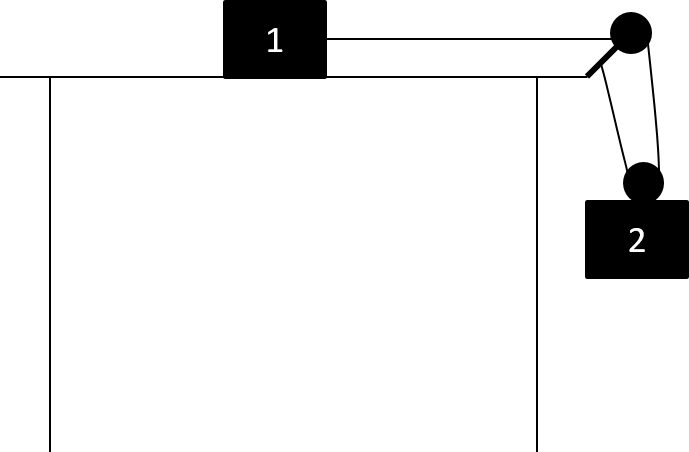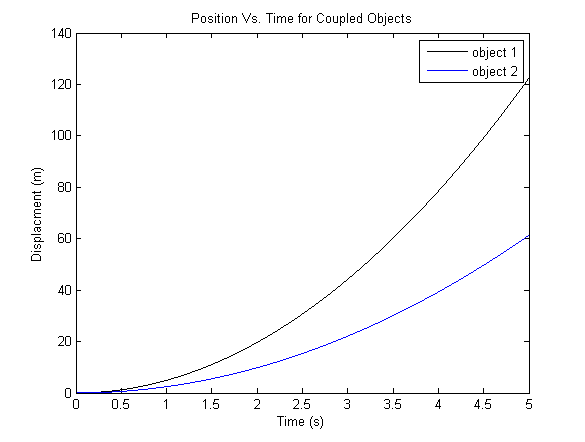| Multiple Representations is the idea that a physical phenomena can be explored in many different ways. For example, there is the physical representation which models the system with figures and diagrams, such as a free body diagram. There is also the mathematical representation which uses the equation(s) governing the physics of the system. All of the representations can be used together to help us understand and quantify the physical phenomena. |
Observe the different types of representations for this section below;
A coupled system of masses.
An example problem walking through Newton's second law for a coupled system
A plot of the displacement of the two coupled objects shown in the image below. Notice that the constraint is ▲x2=½▲x1


Box A is sitting on a table. It is connected to box B by a massless string. I slid box A along the table at a constant 5 m/s. Since box A and box B are connected box B will also move at 5 m/s. Also, as the string is massless the force of tension from the string on each box will be the same.
A video of the Atwood Machine. This is just two nearly equal masses connected over a near-frictionless pully.